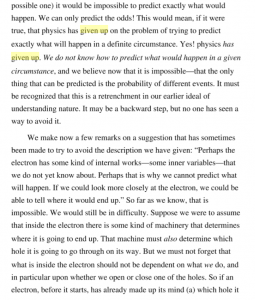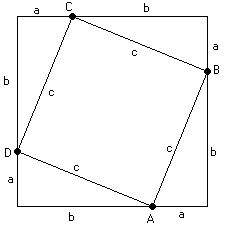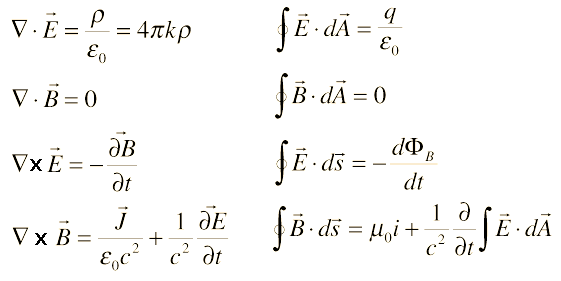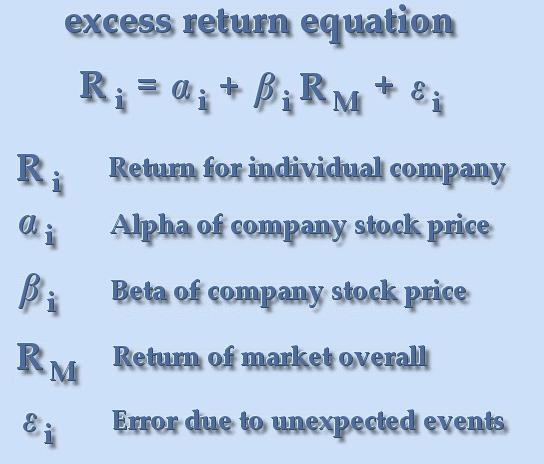This is the latest post I am working on for my blog. I am taking notes, writing down my thoughts as I read a book on the great virtues. This is a subject that I have not investigated much, but one which I am now very interested in. Again, I begin with the Greeks and already, I have re-discovered some profound insights, confirmed by the teachings of Jesus.
It tickles me to no end to make these “connections” between Reason and Faith, East and West, the Greeks and Jesus. The Greeks invented Reason as we know it – literally. The ancient voice of the Greeks IS the voice of Reason eternal. It is exciting to find in this voice the same truths we find in the East; the same voice we find from age to age, sage to sage and confirmed in Jesus’ s own teachings; I find it exhilarating when Reason and Faith come together. There is so much common perception otherwise in the world right now and I think this position is wrong. There is only one truth, Reason and Faith are both valid, so they cannot disagree on that truth in the end.
I will save that argument for another time, however. This is my first exploration of virtue. My studies of philosophy have always revolved around metaphysics and epistemology, so I am eager to finally get down and dirty with the more important questions of how to live the “good life”…
I have not yet been able to fully articulate my understanding, so some of the following needs further development to be philosophically tight, but here is an outline of the results that Plato reached on virtue:
Love is the alpha and omega of the virtues
1) If we but loved fully, we would we would be fully virtuous.
2) But we do not love fully
3) Because we are not born virtuous
4) But we can BECOME virtuous by ACTING virtuous
5) As we become virtuous, we necessarily love more fully because all virtue is derived from love.
6) The fullness of this love brings us to God
7) Therefore, there is a direct Path, a Way of living that will bring us to God.
… and it starts with acting polite.
Politeness, Morality, Love
Politeness is the seed of all virtue. Politeness is not itself a virtue, however, for the source of a thing cannot be the thing itself. We teach our children to “act” polite because they are too young to “be” virtuous. Thus it is with all virtue. We “act” as if we were virtuous and somehow this can transform us.
This was a big paradox for the Greeks: If we are not virtuous, how do we become virtuous? How do we practice “being” virtuous if we are not? The answer: by “acting” virtuous! A strange concept. What is this relationship of “acting” to “being” and can we really transform ourselves in this way?
Not only is the answer in the affirmative – yes, we can transform ourselves in this way – but moreover, this is the ONLY way we can transform ourselves. How else would we? What seems paradoxical, in the end, is the only thing that makes sense.
This line of reasoning (I have not presented it fully here) about the nature of the virtues ultimately leads Plato to a conclusion about love. He shows that all of the virtues are but remnant echos of love. This is quickly seen in the case of moral law.
Moral law demands of us to “act as though we loved”.
Morality is to love what politeness is to virtue. Morality, like all virtue, is a derivative of love. As such, we see that moral law is similarly related to love as are the rules of “acting” polite (that we enforce on children) related to “being” virtuous.
In other words, we “act” polite because we are NOT yet (fully) virtuous. Again, this “acting” that precedes “becoming”.
In exactly this way, we follow moral law because we do NOT (fully) love. For surely, if we DID love, we would need no law to command our very desire.
I think somewhere Jesus said, “Love, and do as you wish“. Jesus’ love frees us from the law, because this law is merely what we have (what we rely on) when we DON’T have love in its fullest. The demands of moral law command us when (and only when) our hearts have failed.
Thus, Love would extinguish the need for moral law. But in the absence of Love, the Law is a trustworthy guide, for Love is it’s source. And since no one other than Jesus loved fully in this sense, moral law is not extinguished.
Moral law obliges us to do what we would do simply out of love, if in fact we loved.
Thus we see how moral law (and all the virtues, ultimately) are derivatives of Love, and necessary only for our lack of Love.
Moral law demands of us to “act as though we loved.” Again, the acting. Once we are no longer acting, but being, then moral law can command nothing of us for nothing can command you to do what you already desire. This is also why the law could command nothing of Jesus, and it is why there is no way for Jesus to be in violation of the law, for love can never be immoral.
Moral law demands of us to “act as though we loved.” This is a revelation, for we see that if we DID indeed love, we would have no use of such a commandment. For then duty and desire would be one and the same (and not opposed).
This is so important! The Buddhists focused on this very opposition. They recognized it as the source of all suffering, and they were right. Again, Greek Reason, Christian Faith, and Eastern Mysticism agree.
I find this to be truly profound! First and foremost, that duty and desire are opposed because we lack the ability to live in a constant state of love is a powerful revelation. One of the tenets of all wise sages from the East and through the ages is to break the ego’s relentless desire for what is not and learn to simply love what is. This is nothing new to Jesus, of course, and more on that in a minute.
The other powerful revelation that this line of reasoning holds is that it is the total destruction of all relativist positions. Moral law is NOT just the rules that the weak have imposed on the strong to prevent the strong from using their strength to the disadvantage of the weak, as the opponents of moral law claim.
So let it be said here and now: Those who would oppose Moral Law, in fact, oppose Love.
I therefore challenge all my humanist brothers and sisters to wake up to their folly. Those of you that would stand against Moral Authority, you need to recognize that it is Love that you stand against.
Plato goes on to say that practicing virtue in this way, with discipline, we approach Love, and in it’s highest form this Love brings us to our own transcendence; to faith; to God…
Transcendence: From Acting to Becoming
When trying to define virtue, I like to think of Jesus. Similarly, when I think of what is meant by transcendence, I like to think of Jesus. If we knew someone who was transcendent (Jesus is a pretty good example), we would notice of them all the characteristics of virtue: politeness, fidelity, prudence, temperance, courage, justice, generosity, compassion, mercy, gratitude, humility, simplicity, tolerance, purity, gentleness, good faith, humor, and above all, love.
In our “acting” virtuous (lovingly) we move towards “being” virtuous (loving). If we were able to “become” we would have transcended. This is not possible, and yet it is what we are called to do. This seems a paradox, yet what is the alternative? There is nothing else that makes any sense.
We love, not to be loved; we love to love.
Love is the ultimate end, Aristotle’s unmoved mover, the source of all motion, energy and being. Thus we can say that we breathe to breathe, we dance to dance, we sing to sing. These need no explanation, no ulterior motive, for they are ultimate in themselves, done for themselves and nothing else. As such, these actions are transcendent for they exist in the purity of The Moment. This is Zen, what the some cultures call Flow. It is what musicians lose themselves in, what athletes experience as the Zone.
This is Transcendence itself, transcendence OF the Self. The loss of self, ego, desire, want, lack, suffering. All dissolved into The Moment. This is the promise and hope and experience of Love – not eros, but Joy, what the Greeks called philia, or deriving pleasure, or joy, from something.
Surely we have lost something in the language that we have but one word for Love any longer but surely we understand, deep in our soul, that a life lived in Love is a transcendent (selfless) one.
The Bravery Paradox
There is a saying that courage (a virtue) only comes after we do the thing we are scared to do. In other words, we have to “act” brave now, while we are still scared. The virtue of courage comes later – and ONLY later. Never does it work out that we get the courage before the fear. It is always the other way around. We have to pretend to be brave and the reward is that we get courage later. It is this way with all the virtues. We “act” first, then we “become”. Without the “acting” there is no “becoming” and our souls make no progress.
Notice that this “progress”, this acquiring of courage, requires there be that which we fear. Logic dictates a conclusion here: What would it mean if we were able to avoid that which we fear, for our entire lives? The consequences, as you can infer, would be disastrous for our souls.
This realization has the power to change everything we see in the world.
Now do we understand Socrates when he claims in the Gorgias that he would rather suffer injustice than do it? Yes, for doing an injustice harms the soul, whereas suffering injustice does not. Yes, we agree with Socrates, for suffering an injustice is an opportunity to practice a virtue, which itself frees the soul from suffering, whereas the reverse imprisons the soul in hatred.
Paradox, or Law of Nature? Courage comes after the fear, not before. We must be mindful of this in our daily lives, for
what would it mean if we were able to avoid that which we fear, for our entire lives? The consequences, as you can infer, would be disastrous for our souls.
Disastrous, for where else shall we have our practice? If we are not virtuous but for the practicing, where else shall we strengthen our souls? How sad would it be if no fear did we ever face such that no courage did we ever receive?
This idea, that by “acting”, we can willfully transform ourselves, is a powerful one. In the east, they call it Karma: act good now so that you become good later. In the Bible it is “reap what you sow.” In each case, we believe the self-evident truth of this for one reason alone: because we have glimpsed love, and we saw that it was good, and thus its derivatives must be good. This is Moral Law.
It is because we have loved, or experienced love at one time, that we are able to recognize the value, the truth, of this love and its derivative (morality), and thus we “act” as though we loved (morality) because to love, to be “in” love is universally recognized as “the good”. It is the prudent thing, always. To love. And it is because this value (of love, aka the good) is universal, that we prove that moral law is therefore not merely a cultural construct as the relativists would argue.
OK, so how do we do this acting?
We can see an example of what the practice of acting virtuously looks like in the writings of Marcus Aurelius, the only Roman Emporer who was also a philosopher. In his Meditations, he writes to himself:
“Put yourself in mind, every morning, that before that night you will meet with some meddlesome, ungrateful and abusive fellow, with some envious or unsociable churl. Remember that their perversity proceeds from ignorance of good and evil; and that since it has fallen to my share to understand the natural beauty of a good action and the deformity of an ill one; since I am satisfied that the disobliging person is of kin to me, our minds being both extracted from the Deity; since no man can do me a real injury because no man can force me to misbehave myself; I cannot therefore hate or be angry with one of my own nature and family. For we are all made for mutual assistance, no less than the parts of the body are for the service of the whole; whence it follows that clashing and opposition are utterly unnatural.”
These words have had great impact on my life. Surely Jesus never had need for such self-reproaches for he was the one who loved fully. But for us, this is often the only way. It is very practical, as a method, at least. But more importantly, we can see from our vantage point the fact that Marcus was walking with Jesus (or vice versa), for it is Love, after all, that he was “practicing”. If we remind ourselves of this love, if we keep our eye on it, never lose site of it, we can live in it more and more.
This is the Way – of Reason and Faith both. This is Jesus. This is love your neighbor. This is to love as Jesus loved. This is the way to “becoming,” the way to “being,” the way of transcendence, the way to God. Every such act like the one above is an act of devotion to God. And this is what the Greek Philosophers, the inventors of Reason and Logic, taught. This is the Way of the East. This is what it means to “believe” in the Greek sense of the word, which actually means “commit” and “follow”. This is what Jesus asks of us, literally. In believing, committing to his Way, the Way of Love, we transcend to God.
As with Marcus, do we not also see how all of our suffering of all the petty, – and not so petty – evils of the world are but our soul’s very opportunity for salvation and joy? Or have we not experienced the joy of completing the very task we dread? Is it not the non-doing that is the torture? Does it not damage our souls when we find excuse to argue and fight rather than find excuse not to? I know for darn sure the effects these things have on me. When I allow Ego to tear down the house to prove ItSelf justified, to defend the honor and reputation of ItSelf, or when I put off what I am duty bound to do, all of these actions suffer my soul much injury, whereas the opposite – sacrificing the self, obeying duties, etc have never ruffled a single feather in the wings of my soul. In fact, quite the contrary: I find that what the ego convinces me of is never the course of action that is in My best interest.
And doing what is in My best interest is what virtue is all about, for what is in My best interest, simply, is to Love – and there is but one and only one obstacle to Love, and that is Ego, for the Ego loves only ItSelf. Until this Selfish Love, which is the source of all evil, can be destroyed I cannot be saved. Thus I save myself by sacrificing myself. By giving (anything) away, I receive tenfold the joy in return. And by giving up the desire to be Right, I receive Peace and open myself to Wisdom.
These are the eternal words of Faith, and of Reason – further proof that Reason is not opposes to Faith. Marcus’ writings reflect the perfect harmony of a deep faith supported by strong powers of pure reason. There is one truth, after all. All paths lead home, even the wrong paths: the mistakes, errors… these in their folly reveal the truth of their negative. Thus the Truth is Everpresent.
From evil to our salvation
The brilliant irony of the human condition is that 1) we are NOT virtuous, and 2) we are fated to suffer “meddlesome fellows.”
It is an irony because it is only through 2) that we have the opportunity to reverse 1).
In all suffering is the opportunity to transcend to God. This is the “bravery paradox”. The courage only comes after we tremblingly walk through our fear. It is through the suffering of “meddlesome fellows,” in other words, that we transcend. This is the virtuous life.
politeness, fidelity, prudence, temperance, courage, justice, generosity, compassion, mercy, gratitude, humility, simplicity, tolerance, purity, gentleness, good faith, humor, and above all, love.
Our suffering of “meddlesome fellows” is but the precondition to our salvation.
This is another revelation in that what we prefer to see as the evils of life, are really the seeds of our salvation. Our vision spins us around a full 180 degrees and we see the world for the first time.
When this moment happens to us, this is called enlightenment.
Thank you, God, for these meddlesome fellows, for through them I have the opportunity to walk more closely with Jesus and experience the transcendent joy of Your love.
We realize that we were looking at things upside down and backwards; because we were looking from the inside out. But we cannot see the label from inside the bottle, so we missed it. The ego got the whole story wrong. It is only when we deny the ego’s vision of the world with us at the center of all desire do we find salvation, transcendence.
Now that we can see for the first time, we for the first time embrace all that life puts before us; for we see for the first time that all is blessing.
The Buddhists and Eastern Mystics, like Jesus, spoke in paradox, I believe, because many times these paradoxes echo this larger paradox… we see things reversed.
Paradoxes are a clue to our inside-out, twisted vision. Until we can see the perfectly straight lines of paradoxical truth, our vision remains warped. Paradox has the power to straighten our thinking. It seems a paradox that you have to act brave before you get to be courageous, but then again, nothing could ever make more sense!
Courage cannot grow within us if everything we do is easy.
Hunger and Desire
Plato thought of desire like a hunger, which is a suffering, based on a lack.
Only by eating can we destroy hunger. If only we weren’t such picky eaters, we would be so much the less consumed with hunger, for an abundance of (spiritual) food surrounds us at all times. Each and every day we get the opportunity to turn the other cheek. These moments are our chances to end our own suffering. This is a paradox, but it is the only thing that makes any sense! All you have to do is try it but once to be convinced. Giving is receiving. This is Karma, and it is not a fairy tale. It is the eternal truth of the soul.
When we practice a virtue, it is like eating in that it destroys suffering. Jesus said to give everything away. Giving brings joy. Joy destroys suffering. Thus, giving is like the meal that destroys hunger. And it is like this with all the virtues. This is why the “acting” is transformative. The practice of acting virtuous is like eating in that it destroys our suffering. And yet, without those “meddlesome fellows” we would not be able to strengthen our virtue, and what is virtue worth, love worth, if it vanishes at the first sign of evil? We need a stronger virtue than that, and alas, the world gives us ample opportunities to practice and strengthen our love. What we have to realize is that this opportunity to practice is always with us; thus in each moment is food abundant enough that we might never be hungry.
Again, I think of Marcus Aurelius’ notes to himself: “since it has fallen to my share to understand the natural beauty of a good action and the deformity of an ill one… I cannot therefore hate or be angry with one of my own nature and family.“
Jesus taught us what it means to love thy neighbor as thyself. This is not just the polite thing to do. It is our very salvation.
Reason, meet Faith… East, meet West… Love, meet Truth… Man, meet Jesus.








 ) using three of the Most Important Operations in the World (addition, multiplication, and exponentiation) and nothing else.
) using three of the Most Important Operations in the World (addition, multiplication, and exponentiation) and nothing else.